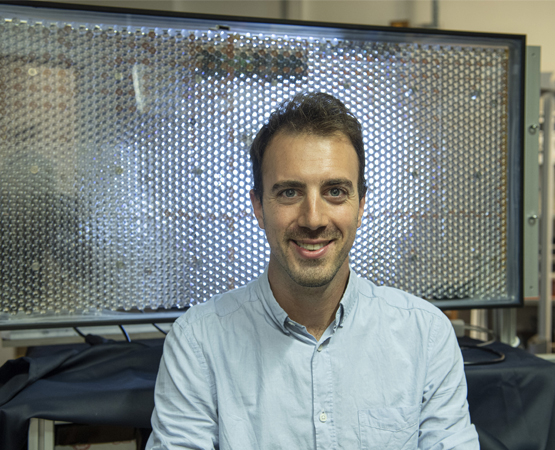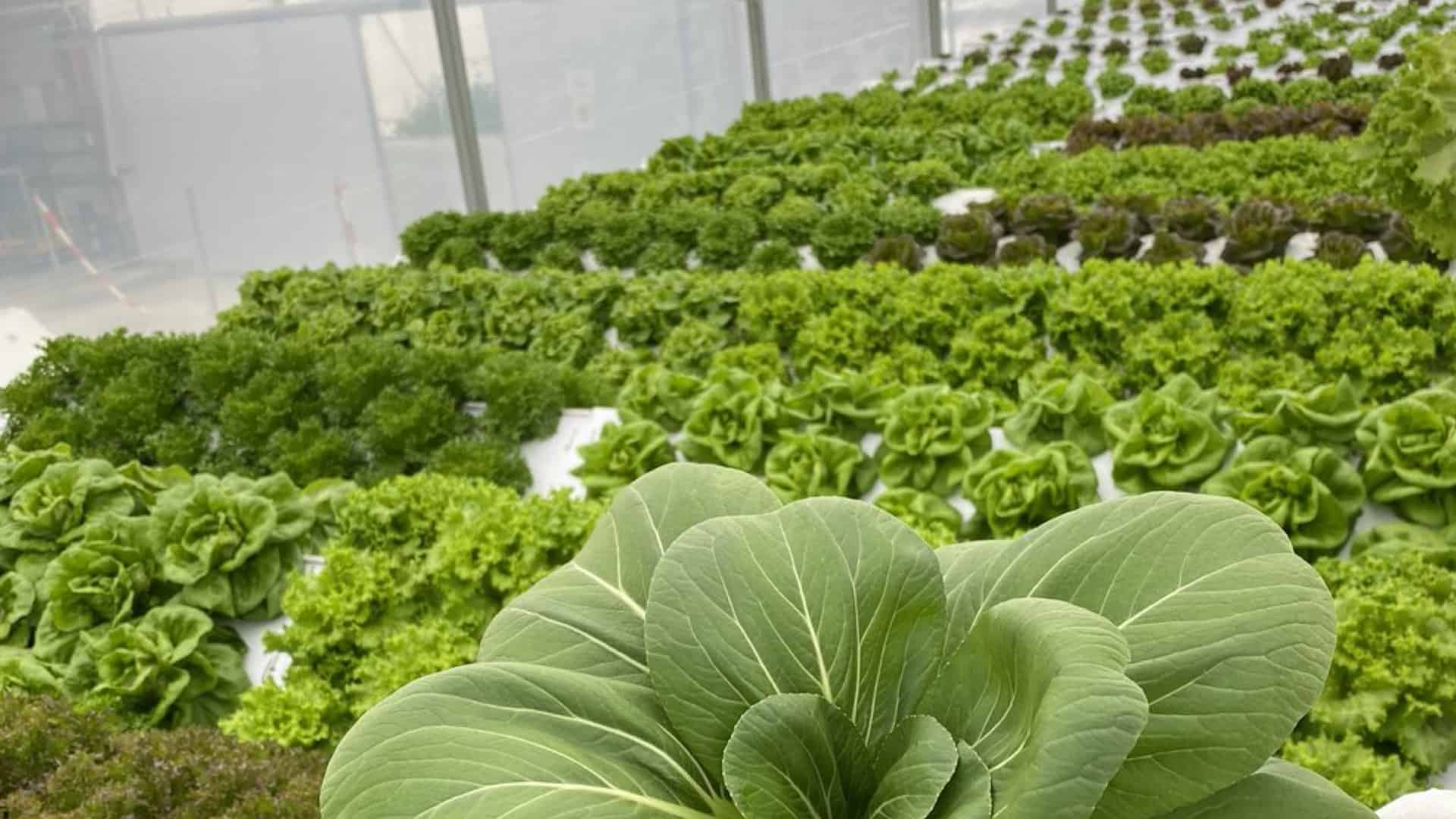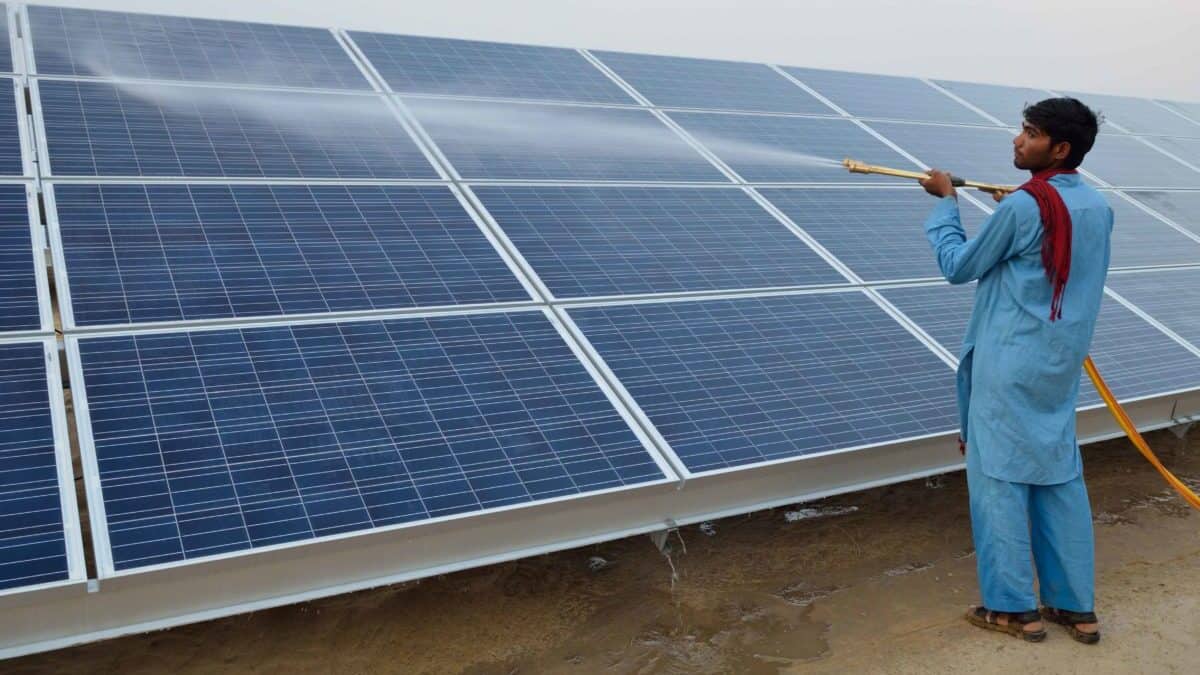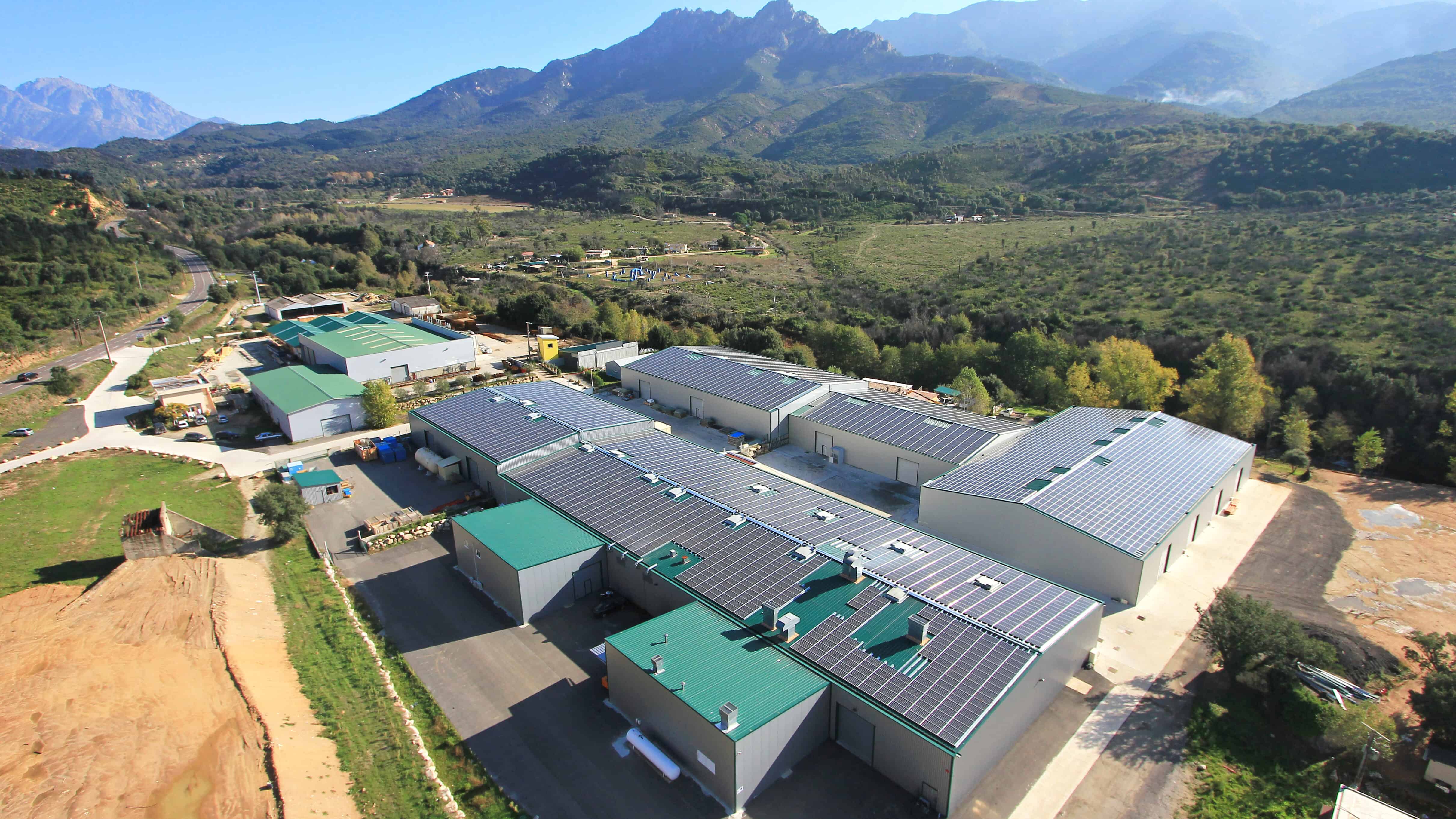Europe needs intelligent solutions to decrease its energy dependence. One innovative way is agrivoltaics. Instead of covering agricultural surfaces with plastic tunnels and greenhouses, startup Insolight proposes translucent solar panels. The company is now starting to build its first large-scale projects. Co-founder Laurent Coulot tells us the full story.

Co-founder and CEO, Insolight
Laurent Coulot founded EPFL spin-off Insolight together with Mathieu Ackermann and Florian Gerlich in 2015. Laurent has a Master of Science in Micro and Nanosystems from EPFL. Verve Ventures led Insolight’s Seed round in 2017 and reinvested in its Series A in 2020, which was also joined by Constructive Venture Fund.
The competition for land between food production and solar power is increasing. Insolight is building solar modules that solve this problem by allowing electricity generation and adjustable shading for crops at the same time. Insolight’s translucent solar panels replace plastic tunnels and greenhouses. This patented technology will speed up the development of “agrivoltaics” – large solar installations that don’t use land instead of agricultural fields but combine these two revenue streams for the benefit of farmers and solar developers. Insolight has been awarded the “Efficient Solution Label” from Bertrand Piccard’s Solar Impulse Foundation.
Insolight has built several pilot installations of its Insolagrin photovoltaic panels together with agricultural research organizations and is currently adding more pilot projects. What is the goal of these projects?
We started the first one together with our partners in 2021. It proved that the raspberries that were grown under the solar panels were of the same quality and taste as the reference fruit. The goal of these pilots is to demonstrate the viability of our solution at scale and to gain more experience with various crops such as strawberries, cherries and blueberries and with different climates such as those in the South of France or Holland. The more data we have the better we can adapt our tracking algorithms that decide when we produce electricity and shade for the plants and when the light is let through the panels to the crops. We want to accommodate as many use cases for Insolagrin as possible. It was also an honor to receive Federal Councillor Guy Parmelin recently who was interested to learn more about agrivoltaics. The timing was perfect as the discussion of the legal framework for Switzerland will start in the Summer of 2022.
We’ll come to the regulatory aspects later, but first I’m interested in how the algorithms decide what is best for the plants while optimizing energy production. How does that work?
Insolagrin provides dynamic shading and shields crops from excess light and heat. Our photovoltaic system uses standard components and the optical layer can be adjusted to provide light to the module or the crops. Like in a greenhouse, there are several sensors for light, temperature and humidity. This closed-loop system tries to optimize the daily light quality the plants receive, and it also takes the weather conditions of the past into consideration. The growers, however, can take control and adjust the current settings with their input via a web interface. This is very important for them, as they have decades of experience deciding what is best for their crops, and it also provides us with important feedback on how to improve our algorithms. While our hardware design is now frozen, we’re still optimizing our software to take nature and the seasons into account.
“We started years ago with a blank paper and now we’re discussing covering fields of 10,000 square meters or more.”
Until now, these are all pilot installations. When is the first “real” project going to happen?
We are currently in discussions with several growers for projects of a size of one hectare and more. When I think about how we started years ago with a blank paper and now we’re discussing covering fields of 10,000 square meters or more, you can imagine how excited we all are. These first commercial installations will be a decisive milestone for Insolight. We’re filing construction permits as we speak and expect first construction works to start in Q4 2022, which means the first project should be ready in Q1 2023. Then we will roll out Insolagrin across Europe.
What does the production process of such an installation look like?
Insolight’s team has done an amazing job of industrializing our solution and sourcing components that are easy to manufacture. This means that we don’t have to build an assembly line. The photovoltaic modules, the optical layer, the structural parts, everything is sourced from suppliers, delivered directly to the agricultural field, and put together on the spot. This means that Insolight is capable of building very big projects of several hectares. The only thing is that lead times for delivery are quite long at the moment, around 4 to 6 months.
Agrivoltaics is a potentially very big market. It has a peculiar feature, though. Your clients are both growers and solar developers. Can you expand a bit on what you sell to whom?
Growers need shading and protection from hail or snow for their crops. In this regard, Insolagrin panels are an alternative to greenhouses or plastic tunnels. But Insolagrin is also a power plant. The growers decide depending on their goals, and their financial capacities. If they want to buy the power plant too, we’re happy to sell it to them. If not, we’ll sell the electricity generation capacity to an energy corporation that is interested in these assets and cash flows in turn for the financing of the installation. It is really a much more durable and sustainable solution. Whereas a plastic tunnel lasts only 5 years and sheds microplastic to the environment, an agrivoltaic installation is built to last 25 years. The larger our installations get, the more competitive their pricing will be against the alternatives. It is important to understand that ground-mounted photovoltaics would be cheaper still, but in Switzerland, for example, these are forbidden. Agrivoltaics compete with rooftop installations, and the beauty of our solution is that we can go and build a megawatt(s) installation at once, while to reach the same capacity 100 rooftops or so would be required, with all the hassle involved.

Invest in Startups
As one of Europe’s most active venture capital investors, we grant qualified private investors access to top-tier European startups. With investments starting at EUR/CHF 10’000, you can build your own tailored portfolio over time and diversify across stages and sectors.
What kind of investment is needed to produce electricity on a berry field of, say, one hectare?
The total cost of installation is in the range of EUR 1m.
Let’s talk about the regulatory hurdles for agrivoltaics. France and Germany are leading the pack when it comes to the legal aspects, and Switzerland is lagging behind, right? Also, don’t you expect pushback from conservationists that put the beauty of the unspoiled landscape above the need for renewable energy production?
Germany, France and Italy have already established legal frameworks for agrivoltaics, and this is very helpful. We expect the EU to define rules soon. France has very detailed rules, for example, and requires studies about biodiversity and other aspects for projects above a certain size. In Switzerland, discussions on the federal level have only started, and the Cantons have a say as well. Berne is quite advanced in this regard. As for the aesthetical question, our agrivoltaic solution aims to replace plastic tunnels and greenhouses. We don’t plan to build projects in areas that aren’t already covered.
What about the competition? Several French pilot agrivoltaics projects involving other suppliers have already been built.
The competition is definitively heating up. A few years ago, when we started to explore the topic, it was really only discussed by a few experts. Now, agrivoltaics has become a megatrend. Emmanuel Macron and Olaf Scholz have designated agrivoltaics as a central pillar of their energy strategy, that’s how mainstream it has become. It is obvious that agrivoltaics as a hot new subset of photovoltaics attracts a lot of interest and innovation from the industry. Some companies have developed dynamic solutions around tilting or sliding modules. We’re confident that our static structure that includes dynamic light adjustment has advantages for replacing greenhouses and plastic tunnels because it is able to protect against heavy rains, frost or hail as well
It might be a side note, but still an interesting one: Why has Swiss retail giant Migros Group entered a partnership with Insolight?
It’s not a side note, it is a very important topic that has been pushed by our Head of Marketing, Luiggino Torrigiani, who is convinced that the end consumers care a lot about the topic and that it is important for us to involve the end of the value chain. If we think about the reduction or compensation of carbon emissions, often all that you get is a piece of paper that states what you did. In this case, the fresh fruit acts as proof. People like you and me will be able to choose at one point in the shop if they want to buy fruit that is produced in a carbon-neutral way or not. We’re delighted to have Migros Group on board and they’re actively supporting us. We’re also entering partnerships with other companies who are interested in sustainable solutions, besides food retailers.
Insolight is going to raise a Series B financing round later this year. What story are you telling investors and are you also considering corporate venture capital arms of energy firms to join the round?
Our first commercial installations of more than 1 hectare are the first steps in the rollout of our solution. We can then market our solution to all the growers in a region at once, especially now that we have pilots that people can actually visit. We can then replicate what we did already on a larger scale. Our revenues can grow very quickly going forward. Our goal is to reach sales of more than EUR 100 million by 2026, and our margins will increase substantially because of the economies of scale, even if they aren’t comparable to those of a software startup. On the investor side, we’re targeting investors with expertise in solar or agritech. Private investors can join the round via Verve Ventures, as they did in the past. But we’re not just looking for equity investors, but also companies with expertise in asset-backed or project finance that are looking for debt investments with very strong sustainable credentials.
The strong position Insolight is in now is the result of years of hard work. It’s hardware, it’s capital intensive, it’s deep tech applied to solving a big problem and you cannot speed up the rhythm of nature. What was your biggest challenge and lesson learned so far?
As an entrepreneur, you have certain preconceived notions about what you want to achieve and how, and some of them turn out to be wrong. Like every other startup, we have made mistakes in the past. The important thing is to learn from them and to be able to adapt quickly. With our series A, we pivoted from our initial goal of rooftop installations to agrivoltaics, which turned out to be the right choice. The more you listen to the market, the more precise your thinking gets. Everyone can claim to do this and that and make big promises. But eventually, you need to build something that works, that can be seen and touched, otherwise, people won’t believe you. Our biggest challenge was definitely to pass the manufacturing barrier. Now that we have done this, our biggest headache has disappeared. We were always joking that software companies have it easier, but with our hardware now in place, we’re also turning more into a software company, boosting further the value of our hardware.
Written by
WITH US, YOU CANCO-INVEST IN DEEP TECH STARTUPS

Verve's investor network
With annual investments of EUR 60-70 mio, we belong to the top 10% most active startup investors in Europe. We therefore get you into competitive financing rounds alongside other world-class venture capital funds.
We empower you to build your individual portfolio.
More News
06.10.2021
How our startups contribute to the UN Sustainable Development Goals
Bertrand Piccard thinks that investors should see ecology through the lens of economic profitability. This article explains why his Solar Impulse Foundation awarded the “Efficient Solution Label” to our portfolio companies CleanGreens, Insolight, and 9T Labs, and how they contribute to sustainable development.
18.05.2020
Lessons learned in India applied to a Swiss startup
In this interview, Alan Rosling shares his thoughts on the future of solar, leveraging a storied past as a pioneer in the industry. As the co-founder of Kiran Energy in India and a board member of the Swiss startup Insolight, Alan believes tech entrepreneurs may bring solar into the light, especially for investors still skeptical of the industry’s potential.
30.04.2020
“Institutional investors started buying solar plants”
Rainer Isenrich is not only CEO and president of the board of Edisun Power, he's also a pioneer in solar power and convinced of its bright future. As he explains in this interview, investor's appetite for solar plants is growing but finding the surfaces to build them isn't trivial, a problem where startups like Insolight might be able to help.
Startups,Innovation andVenture Capital
Sign up to receive our weekly newsletter and learn about investing in technologies that are changing the world.




